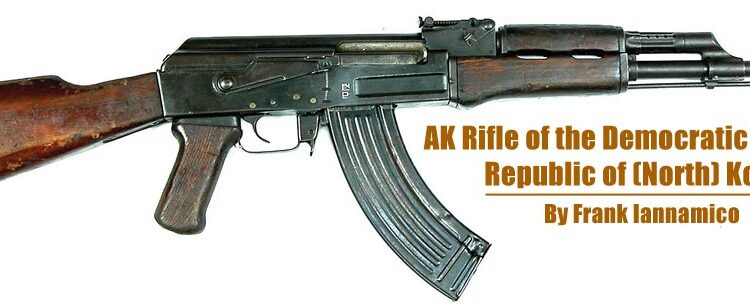By Frank Iannamico

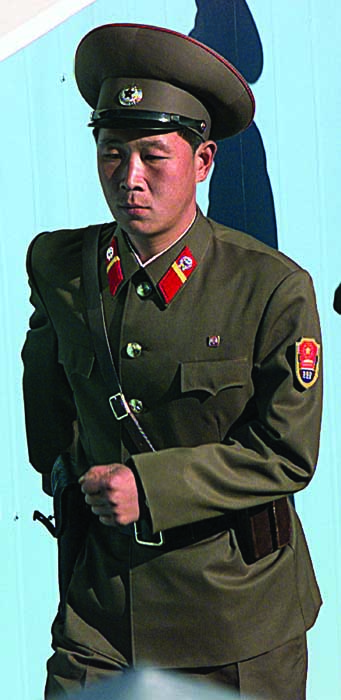
After the defeat of Germany in May of 1945, the Allies began to focus all of their resources to defeating the tenacious troops of the Japanese Imperial Army. On 8 August 1945, the Soviet Union declared war against Japan and immediately launched an invasion of Japanese occupied Manchuria and Korea. At this point in the war the Japanese were ill prepared to stave off the advancing Red Army. At the same time period B29 bombers from United States’ Army Air Corps had been conducting a relentless bombing campaign against the Japanese mainland. The final blow occurred when two atomic bombs were dropped on the Japanese cities of Hiroshima and Nagasaki. Despite the resolve of the Japanese people, the Allied offensive proved too much for them to bear, and on August 15, 1945, Japan surrendered unconditionally. The Soviet decision to invade Korea and engage the Japanese army during the last days of World War II would alter the history of contemporary Korea, and would eventually result in yet another armed conflict.
At a conference held in Cairo, Egypt on 22-26 November 1943, the Allies agreed to strip Japan of all the territories acquired since the beginning of their aggressive expansionist drive. At the Cairo meeting the United States, China, and Britain had all agreed that Korea would be allowed to become free and independent after the war. Soviet leader Josef Stalin had refused to attend the conference because China’s anti-Communist leader Chiang Kai-shek had been invited.
Later at the Yalta Conference held in February 1945, U.S. President Franklin D. Roosevelt, and Soviet Marshal Josef Stalin agreed to establish an international trusteeship for Korea, but no decision had been made on the exact formula for governing the nation after the end of the war. Following the landing of Soviet forces in Korea, the U.S. suspected the Soviets might try to occupy the entire country and place it under their control. This compelled the United States to improvise a plan for Korea. On 15 August 1945, U.S. President Harry Truman proposed the division of Korea at the 38th parallel, to which Stalin agreed. The Soviet Union accepted the surrender of all Japanese troops north of the 38th parallel with the United States accepting the surrender of troops south of it. The division of Korea by the two emerging superpowers would soon aggravate their disagreement on the terms of Korean independence. The U.S. and the Soviets then established governments based on their own ideologies, leading to Korea’s division into two political entities: North and South Korea.

The Korean War
Escalating border conflicts at the 38th parallel and attempts to negotiate elections for the entire country marked the period immediately before the start of hostilities. All of the negotiations ended when troops of the North Korean Army invaded the South on 25 June 1950. The United States and the United Nations intervened on behalf of South Korea. Despite a rout of U.S. and allied troops early in the fighting, they soon regrouped and succeeded in pushing the North Koreans back past the 38th parallel all the way to the northernmost provinces of North Korea. The Chinese, concerned that the U.S. was interested in using a defeated North Korea as a base for operations against Manchuria, dispatched their army across the Yalu River during October 1950. The estimated 200,000 plus troops of the Chinese intervened on behalf of North Korea, shifting the balance of the war and ultimately leading to an armistice signed on 27 July 1953 that restored the original boundaries between North and South Korea. The 38th parallel continues to divide the peninsula today with anti-Communist and anti-North Korea sentiment remaining in South Korea.

The Weapons
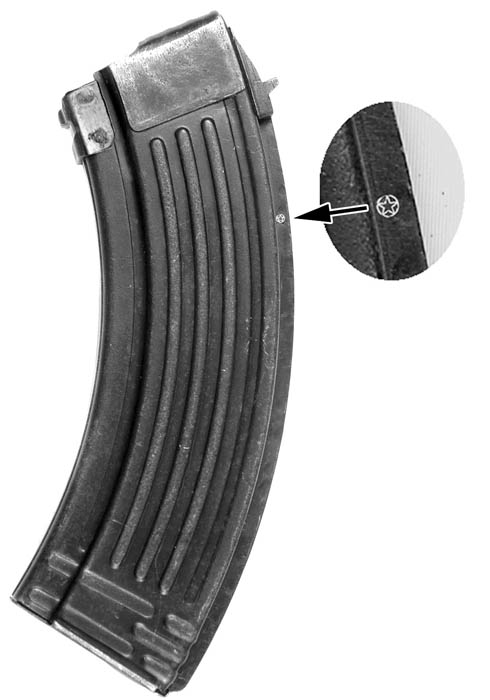
The Korean War was fought with both sides using the same basic equipment and weapons fielded during World War II. The U.S. infantry troops being issued M1 Garand rifles, M1-M2 carbines, BARs, and Browning machine guns. To keep up with demand during the 1950s war, the M1 rifle, BAR and M3A1 submachine guns were briefly placed back into production. The North Korean and Chinese troops were armed with World War II Soviet design small arms that included the Mosin Nagant bolt-action rifles, DP light machine guns, PPSh41 and PPS43 submachine guns, and ironically many U.S. made small arms that were presented to Russia and China under the U.S. Lend-Lease program of World War II. Although the Soviets had developed and issued limited numbers of their new AK-47 rifle at the time of the Korean War, none were known to have been issued or used by the Communists in that conflict. The United States’ first post World War II infantry weapon was the 7.62mm M14 rifle, a weapon that was very similar to its predecessor the M1 Garand. Although the M14 was formally adopted in 1957, government budget cuts delayed full-scale production resulting in the weapons not being issued until 1959.
During the Cold War era the Soviet Union began a widespread military aid program that provided weapons and eventually technical assistance to enable their Communist Warsaw Pact members and associated satellite countries to manufacture Soviet weapons and ammunition in their own factories. North Korea was assisted by the Soviets in setting up manufacturing plants for the indigenous production of AK assault rifles and ammunition during the late 1950s. Most of the individual countries’ AK-47 designs varied slightly from the original Soviet pattern, but component commonality was nearly 100 percent as was the 7.62x39mm ammunition that became the standard small arms cartridge of the Communists.
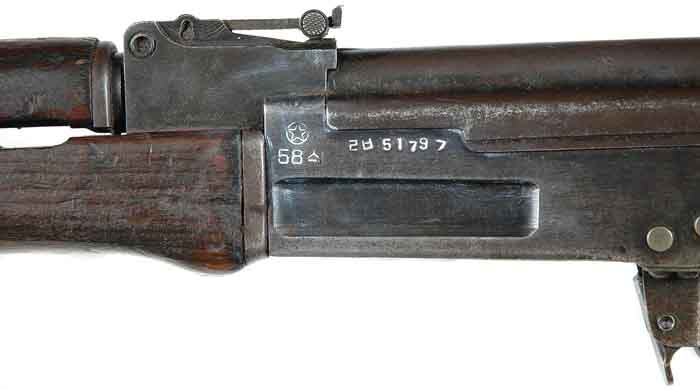
North Korean Type 58, 7.62x39mm
North Korea began producing a 7.62x39mm AK-47 variant in 1958. Designated as the Type 58, the weapon was a close copy of the Soviet AK-47 with the forged and machined receiver of the Soviet Type 3 design. The North Koreans produced the weapon under license in two state run factories identified by Western intelligence only as Factory 61 and Factory 65 both located near Chongjin, North Korea. The Type 58 was produced from 1958 until 1968. Total production has been estimated at 800,000 rifles during the ten-year production run. The Type 58 was manufactured in both full wood stock and underfolding stock models. Identifying marks on the left side the receiver are a star within a circle, and the model number 58. On the right side, the selector positions were designated with Korean Hanghul characters. The safe position was not marked. Like all standard Soviet pattern AK-47 designs the middle selector position is full automatic, the lower position semiautomatic. Full-automatic cyclic rate of fire is approximately 600-650 rounds per minute. North Korean Type 58 pattern rifles use the standard steel thirty-round magazine. The finish applied to the Type 58 was an average to poor quality bluing.
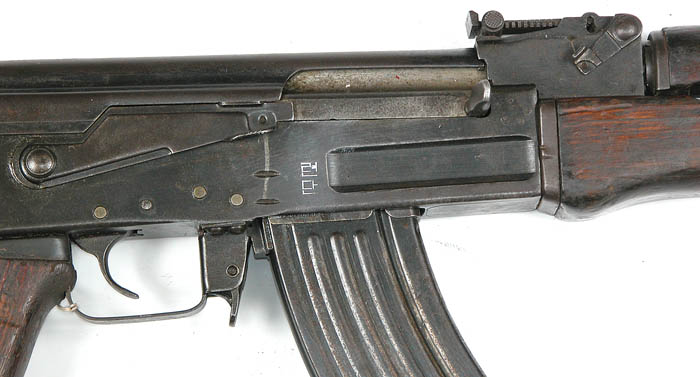
North Korean Type 68, 7.62x39mm
North Korea converted its AK production over to the Soviet AKM style stamped receiver in 1968. The trigger group of the Type 68 does not however include the Soviet design hammer delay components, and the trip sear is fabricated from a sheet metal stamping. The trigger is the earlier double-hook design. For adding strength and rigidity to the thin receiver a reinforcing rivet and sleeve was placed midway in the receiver above the magazine release. The front trunnion used the “European” style parallel rivet pattern. The barrel was pressed and pinned into the trunnion. The steel backplate trunnion was secured with two rivets extending completely through both sides of the receiver serving to add rigidity to the receiver and as an attachment point for the fixed buttstock. The backplate also had a dovetail-style channel machined into the top to house the recoil spring guide, which contained the recoil spring and provided a means to secure the receiver top cover in place. A small oval indentation, on each side of the receiver above the magazine-well, serve as surfaces inside the receiver to center the magazine in position. Steel axis pins were used for the hammer, trigger and trip sear and the holes on the left side of the receiver had elongated indentations or “dimples” around them primarily to maintain the same inside dimensions as milled receiver models, therefore maintaining the same axis pin and fire control group dimensions. The left side of the receiver on the Type 68 has four dimples around the hammer axis pinhole, the trip-sear pin-hole has three and the trigger has two. The trip lever also has an “I” shaped “dimple” on the receiver’s right side. Like milled receiver AK rifles, the long trip lever spring was used to secure the trip lever, hammer and trigger axis pins in place while the spring rests in a groove in each of the pinheads on the left side. The trip lever, hammer and trigger pins are all identical. Inside of the receiver, the automatic trip lever was redesigned to clear the center receiver support rivet. The Type 68 also retained many features from the earlier Type 58 model such as a solid catalpa wood stock, wood pistol grip, handguards, and the smooth sheet-steel top covers. North Korean Type 68 rifles are unique in that many of them have a sheet metal roller on the rear sling swivel. While most AKM pattern rifles have the rear sling swivel mounted on the buttstock, the Type 68 had the swivel retaining bracket spot-welded on the left side of the receiver. The pistol grip stud and lower stock tang are riveted in place. The milled gas block is flat on both sides and, like the Type 58, has a sling swivel that extends outward from the left side. The folding stock variant of the Type 68 has the Soviet underfolding design with stamped steel struts and buttplate. Some of the North Korean folding stock models have been observed with holes in their struts to reduce the overall weight of the weapon.
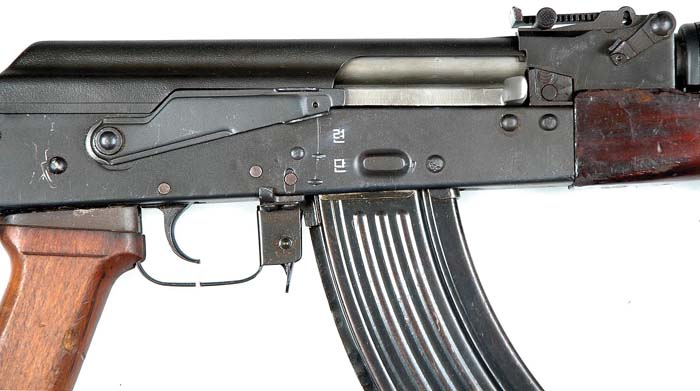
Identifying marks on the left side the receiver are a star inside of a circle, and the model number 68. On the right side the selector positions were designated with Korean Hangul characters. The safe position was not marked. The finish used on North Korean stamped receiver AK rifles was a dark gray phosphate. Standard thirty-round stamped steel magazines with strengthening ribs were issued with the weapons. Also observed were orange color plastic magazines with the North Korean star-in-circle markings. The serial number was marked on the left side of the barrel trunnion. Like the Chinese stamped receiver model, the rear sights are only graduated out to a distance of 800 meters. The battle sight position is marked in Hangul characters with three different style characters having been observed. Type 68 rifles are fitted with Type 58 style flat muzzle nuts.
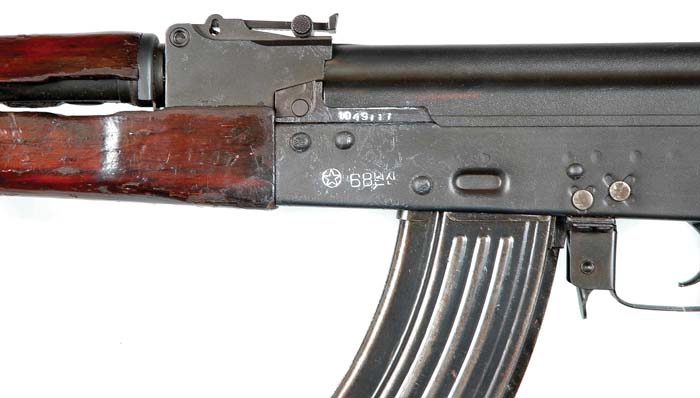
There is also an export version of the Type 68 with universally accepted icon markings. The standard AK battle sight position of 300 meters is designated with a number 3 or Roman numeral III. The selector positions are a Roman numeral I for semiautomatic fire and an infinity symbol for full-automatic. There are no “Type 68” or “star” markings on the North Korean export models. The Farabundo Marti National Liberation Front (FMLN) guerrillas received a large shipment of North Korean manufactured AKM type rifles during the late 1980s. North Korean manufactured export models of their Type 68 rifles have also been widely distributed throughout Central and South America as well as Cuba.

North Korean Type 88, 5.45x39mm
The North Koreans have adopted and manufactured their own version of the 5.45x39mm AK-74 rifle: the type 88. The weapons have a Russian pattern AKS-74 metal sidefolding skeleton type buttstock attached to the receiver by an adapter block and there is also a full stock model. The effective Russian-style muzzle brake is fitted to the barrel and the thirty-round magazines are made of steel. The North Korean star inside of a circle logo is located on the left side of the receiver.
North Korean made Type 58 and Type 68 rifles have turned up all over the world, first in Vietnam and Cuba during the 1960s and more recently in the Middle East and Africa.
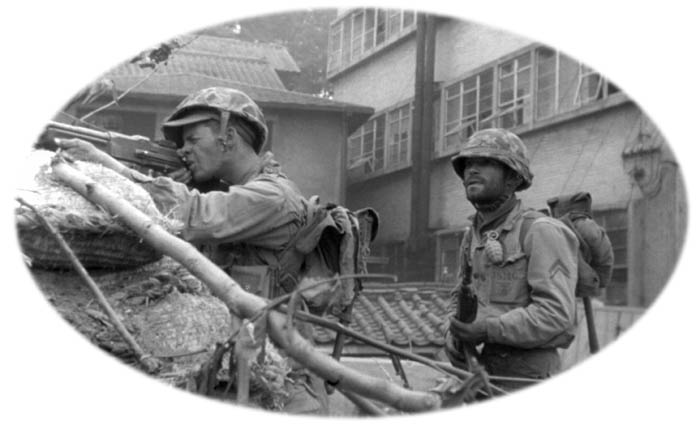

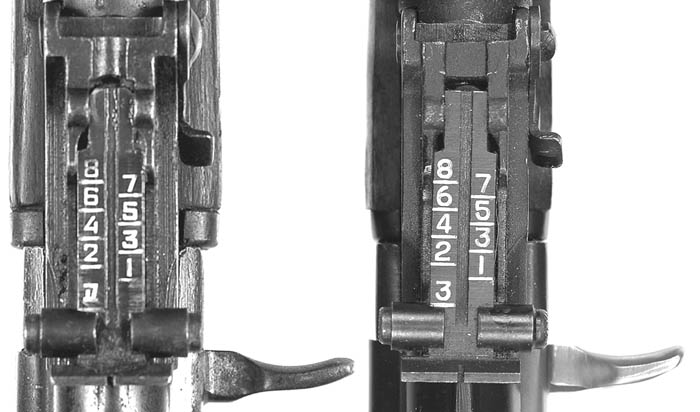
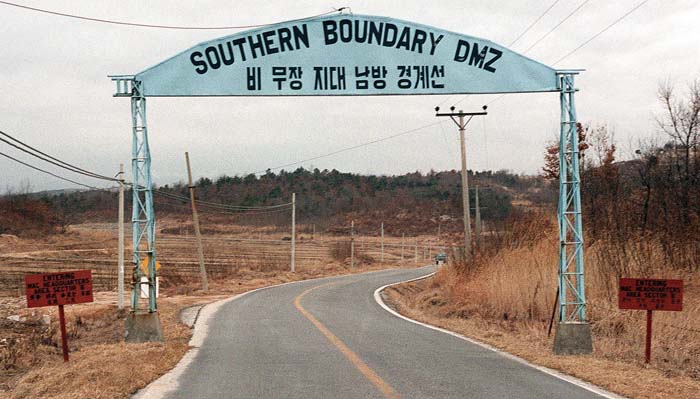
| This article first appeared in Small Arms Review V13N5 (February 2010) |



